Posted by PuertoMadero in asides, Blog, Featured Articles | 4 Comments
UN NUEVO PLANETA EN EL SISTEMA SOLAR
¿Un nuevo planeta en el Sistema Solar?
Dos científicos del Instituto Caltech aseguran haber descubierto un noveno planeta que orbita alrededor del Sol
Un cambio en los libros escolares de ciencia del tamaño de Neptuno. El posible descubrimiento de un nuevo planeta del Sistema Solar podría cambiar otra vez la famosa retahíla que comienza con Mercurio y que hasta hace unos años acababa en Plutón. Investigadores del Instituto Tecnológico de California (Caltech), en EE UU, acaban de publicar su llamativo hallazgo: un gran planeta, muy distante, que orbita alrededor del Sol.
Este planeta tendría 10 veces la masa de la Tierra y orbitaría alrededor del Sol 200 veces más lejos que Neptuno
Aunque varias veces en la historia se ha creído dar con un nuevo planeta que gire en torno a nuestra estrella, los cálculos de estos científicos, Michel Brown y Konstantin Batygin, proponen la existencia de un planeta del tamaño de Neptuno (con un volumen de casi 60 tierras) orbitando alrededor del Sol entre 600 y 1.200 veces más lejos que la Tierra. La órbita, dicen los expertos, es de 15.000 años.
![]() Los astrónomos de Caltech, reconocidos por el descubrimiento de otros planetas, se apoyan en mediciones a partir de anomalías observadas en el comportamiento de varios objetos que sitúan en el mapa este posible planeta X, que estaría modificando sus rumbos por la atracción gravitatoria. Su masa, diez veces la de la Tierra, estaría explicando la órbita de estos otros planetas enanos como Sedna y otros cinco objetos que orbitan más allá de Neptuno. Según los cálculos de Brown y Batygin, el comportamiento de estos objetos solo tiene un 0,007% de posibilidades de explicarse por el azar.
Los astrónomos de Caltech, reconocidos por el descubrimiento de otros planetas, se apoyan en mediciones a partir de anomalías observadas en el comportamiento de varios objetos que sitúan en el mapa este posible planeta X, que estaría modificando sus rumbos por la atracción gravitatoria. Su masa, diez veces la de la Tierra, estaría explicando la órbita de estos otros planetas enanos como Sedna y otros cinco objetos que orbitan más allá de Neptuno. Según los cálculos de Brown y Batygin, el comportamiento de estos objetos solo tiene un 0,007% de posibilidades de explicarse por el azar.
MAS INFORMACIÓN
De ahí que consideren sólida la existencia de este planeta, con 500 veces más masa que Plutón, que daría sentido a las órbitas de estos otros seis objetos. “Sólo se han descubierto dos auténticos planetas desde la antigüedad [Urano, 1871; Neptuno, 1846] y este sería el tercero. Hay una parte muy importante de nuestro sistema solar que todavía está ahí fuera para ser descubierta, lo que resulta muy emocionante”, ha declarado Brown a su instituto.
Los investigadores, que publican su hallazgo en Astronomical Journal, estuvieron buscando en secreto este objeto desde que otro de los miembros de su equipo descubriera en 2014 un objeto transneptuniano cuya órbita solo podía tener una explicación: un lejano planeta que estaba influyendo en su camino.
Según publica Science, Brown es responsable de la defunción de Plutón como planeta, tras descubrir el planeta enano Eris en el cinturón de Kuiper y reabrir el debate sobre su condición. Ahora, podría volver a ser Brown el que sume un noveno planeta al Sistema Solar reescribiendo de nuevo los textos escolares.
http://cultura.elpais.com/buscador/
========================
https://www.yahoo.com/tech/planet-nine-evidence-grows-for-1347529463955510.html
.
Planet Nine? Evidence Grows for Big Addition to Solar System

(Image: Caltech/R. Hurt (IPAC))
A decade ago Mike Brown helped get Pluto demoted from a “planet” to a mere “dwarf planet.” Now the astronomer and one of his CalTech colleagues may have plotted the orbit of a new ninth planet in our solar system, dramatically larger than Pluto and much, much farther away.
As described by Brown and fellow astronomer Konstantin Batygin Wednesday in theAstronomical Journal, this new planet would be roughly 10 times the size of the Earth and would take as much as 20,000 years to make a single orbit around the sun. Its theoretical size — between the size of the Earth and Neptune — is unlike any other body in our solar system, but fits into the most common size of exoplanets detected in other systems.
Astronomers have been hunting for an undiscovered “Planet X” for nearly two centuries, generally without success. The notable exception: Neptune’s presence in our solar system was predicted by observing irregularities in the orbit of Uranus — and then later proven by observation through telescopes. Brown and Batygin’s finding is similar, in that they’ve done the math that strongly suggests the presence of a large planet in an weird orbit way beyond Pluto. But until someone spots the planet with a telescope, it’s just a theory.
Until recently, conventional wisdom held that we were done finding large objects in our solar system. In 2006, when Pluto was demoted, Brown recalls telling many people, “That’s it. That’s the end of planets. We get eight in this solar system and that will have to be enough.” A survey by NASA’s Widefield Infrared Survey Explorer (WISE) satellite essentially proved that there couldn’t be anything Saturn-sized or larger hiding out beyond Pluto.
Batygin and Brown’s theoretical “Planet Nine” — the scientists have even set up a website at findplanetnine.com — slides under the WISE size limit, because it’s smaller than Neptune. That far away from the sun, there’s very little light and heat, making it extraordinarily difficult to detect smaller objects. The search is already underway at ground-based telescopes around the world, but it’s a little like searching for a needle in a haystack in the dark. Brown and Batygin are using the Subaru telescope in Hawaii to search for the object, but it might take as much as five years for them to find it.
Cosmic clues
The roots of Brown and Batygin’s discovery come from another distant solar system object discovered by Brown. Sedna is a weird object on an odd orbit that doesn’t fit in with the behavior of other distant icy objects (including Pluto) in what’s called the Kuiper Belt. When astronomers Chad Trujillo and Scott Sheppard discovered a second Sedna-like object in a weird orbit, Brown and Batygin got suspicious.
As it turned out, the six most prominent objects in the far-outer reaches of the solar system all have orbits that point in the same direction and make their closest approach to the sun in very similar locations. The chances of that happening entirely by chance were estimated by Batygin as being, well, astronomical. All of a sudden, the scientists — who entered into the process hoping to disprove the hypothesis that there was an undiscovered big planet knocking around the outer solar system — suddenly started to wonder if it might actually be true. When they discovered that their projected Planet Nine accurately predicted the existence of some other weird distant solar-system objects, things really fell into place.

Planet Nueve? Evidencia crece para Big Adición al Sistema Solar
Jason Snell
20 de enero 2016
(Imagen:. Caltech / R Hurt (IPAC))
Hace una década, Mike Brown ayudó a Plutón degradado de un “planeta” a un mero “planeta enano”. Ahora, el astrónomo y uno de sus colegas CalTech pueden haber trazado la órbita de un nuevo noveno planeta de nuestro sistema solar, dramáticamente más grande que Plutón y mucho, mucho más lejos.
Como se ha descrito por Brown y su colega astrónomo Konstantin Batygin miércoles en el Astronomical Journal, este nuevo planeta sería aproximadamente 10 veces el tamaño de la Tierra y podría tomar hasta 20 mil años para hacer una sola órbita alrededor del sol. Su tamaño teórico – entre el tamaño de la Tierra y Neptuno – se parece a ningún otro órgano de nuestro sistema solar, pero encaja en el tamaño más común de los exoplanetas detectados en otros sistemas.
Los astrónomos han estado buscando para un desconocido “Planeta X” durante casi dos siglos, por lo general sin éxito. La notable excepción: la presencia de Neptuno en nuestro Sistema Solar se predijo mediante la observación de las irregularidades en la órbita de Urano – y luego probados por la observación a través de telescopios. Brown y de Batygin hallazgo es similar, en la que han hecho los cálculos que sugiere la presencia de un gran planeta de una manera extraña órbita más allá de Plutón. Pero hasta que alguien descubre el planeta con un telescopio, es sólo una teoría.
Hasta hace poco, la sabiduría convencional sostuvo que habíamos terminado la búsqueda de objetos de gran tamaño de nuestro sistema solar. En 2006, cuando Plutón fue degradado, Brown recuerda haberle dicho a muchas personas, “Eso es todo. Ese es el final de los planetas. Nos conseguir ocho en este sistema solar y que tendrá que ser suficiente. “Una encuesta realizada por Explorador Infrarrojo de Widefield de la NASA (WISE) por satélite esencialmente demostró que no podía haber nada Saturno de tamaño o más grande escondido más allá de Plutón.
Batygin y teórica “Planet Nine” de Brown – los científicos incluso han creado un sitio web en findplanetnine.com – diapositivas bajo el límite de tamaño de WISE, porque es más pequeño que Neptuno. Que lejos del sol, hay muy poca luz y el calor, por lo que es extraordinariamente difícil de detectar objetos más pequeños. La búsqueda ya está en marcha en los telescopios terrestres de todo el mundo, pero es un poco como buscar una aguja en un pajar en la oscuridad. Brown y Batygin están utilizando el telescopio Subaru en Hawai para buscar el objeto, pero podría tomar hasta cinco años para que la encuentran.
Pistas cósmicas
Las raíces de Brown y de Batygin descubrimiento vienen de otro objeto del sistema solar distante descubierto por Brown. Sedna es un objeto raro en una órbita extraña que no encaja con el comportamiento de otros objetos helados distantes (incluido Plutón) en lo que se llama el Cinturón de Kuiper. Cuando los astrónomos Chad Trujillo y Scott Sheppard descubrieron un segundo objeto Sedna-como en una órbita extraña, Brown y Batygin consiguieron sospechoso.
Al final resultó que, los seis objetos más destacados en los tramos de largo exteriores del sistema solar todos tienen órbitas que apuntan en la misma dirección y hacen su máximo acercamiento al sol en lugares muy similares. Las posibilidades de que eso ocurra en su totalidad por casualidad fueron estimados por Batygin como, bueno, astronómico. De repente, los científicos – que entraron en el proceso de la esperanza de refutar la hipótesis de que hubo un gran planeta sin descubrir golpeando alrededor del sistema solar exterior – de repente comenzaron a preguntarse si en realidad podría ser verdad. Cuando descubrieron que su proyectada Planet Nueve predijo con exactitud la existencia de algunos otros objetos del sistema solar distantes extrañas, cosas realmente cayeron en su lugar.
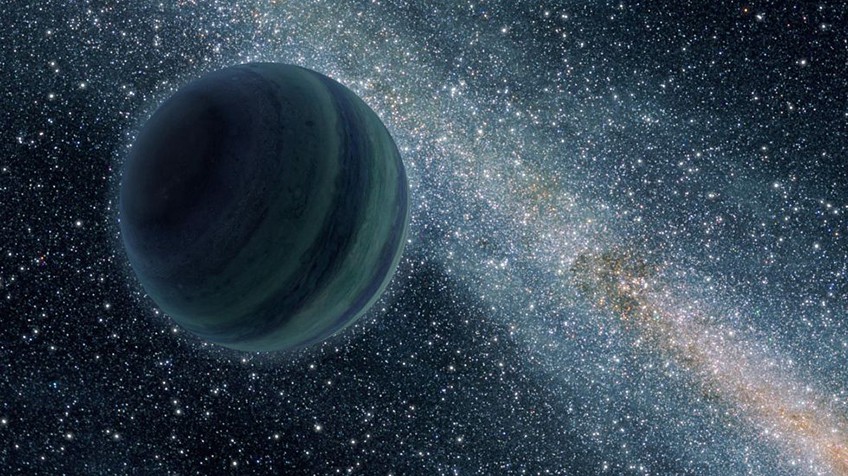

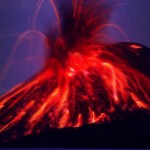




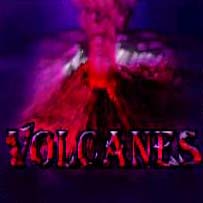
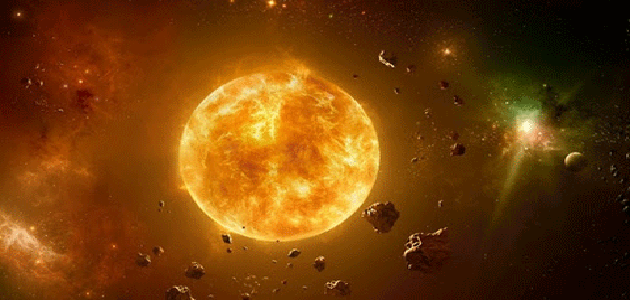












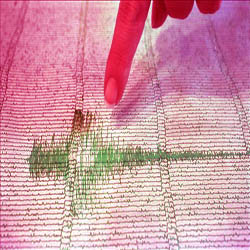
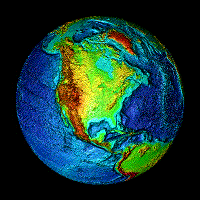













Al fin era verdad…..
Amen, todas las piezas tomando lugar, bendiciones hermanita Angie.
Gracias a nuestro señor Jesucristo, el misterio va tomando forma, hoy descubren un nuevo planeta, mañana el asteroide que viene a impactar la tierra, hermanos gracias a nuestro señor, sus siervos no quedaran como falsos profetas y son redimidos, cuando anuncian tu venida y la futura destrucción de esta tierra pecaminosa muchas veces, son tomados como charlatanes y falsos profetas y se burlas de ellos, en vez de llamar al arrepentimiento y a seguir el camino de santidad y de búsqueda da la salvación son puestos en silla de escarnio, gracias señor Jesús por tu misericordia alabado sea tu nombre glorioso señor
Gracias por su aporte hermano, muy cierto lo que dice y las inundaciones producidas por el mar en todo el litoral pacífico, incluso otras áreas del mundo como Cuba, Europa, etc., fueros avistadas espiritualmente antes por tantos hermanos, pero el hombre natural, no cree.
Dios le bendiga.